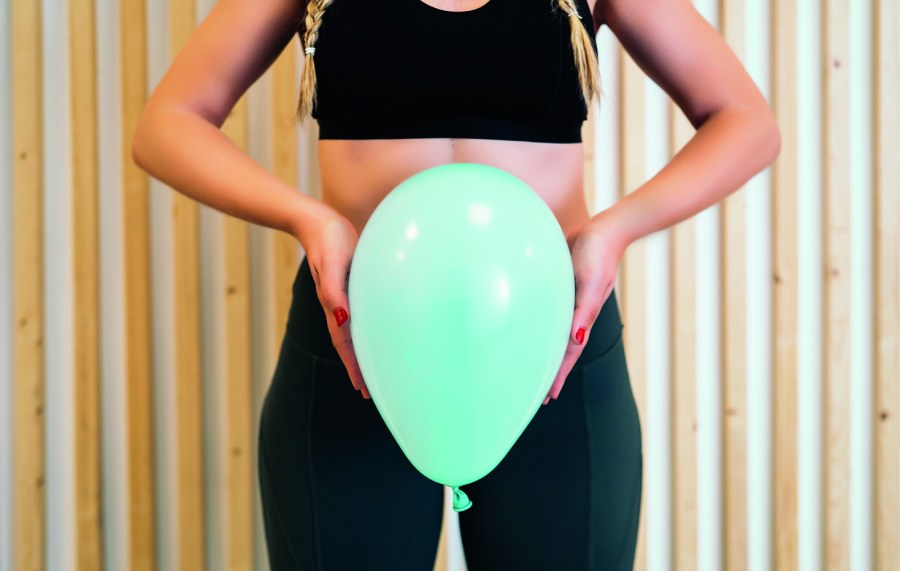Is it time to add pelvic floor exercises to your training schedule? We reveal why you shouldn’t overlook these important muscles…
Thinking about adding some pelvic floor training to your week? We think nothing of hiring personal trainers, sports coaches, physios and massage therapists to improve our athletic performance and keep our bodies in check, but should we be adding physiotherapy for the pelvic floor – or ‘pelvic PT’ – to that list? Growing evidence suggests we should, and not just in preparation to give birth or get our pelvic floor back in shape post-partum.
Various studies show that participation in certain kinds of activity (think: cycling, weightlifting and forms of high-impact exercise such as running and jumping) can take a toll on the pelvic floor, potentially leading to a number of health issues over time. Worryingly, these issues may not only impact on your enjoyment of sport now, but also prevent you from exercising in the future.
Thankfully, there are many steps you can take to strengthen your pelvic floor and protect it from harm. Not only will they improve performance in the gym (and the bedroom), they’ll also boost your self-confidence and help you to carry out daily tasks more easily.
What is the pelvic floor?
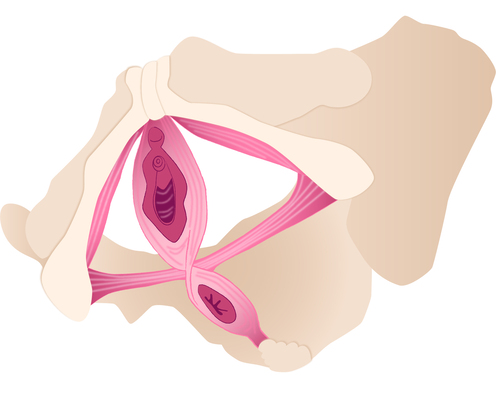 In her work as a top pelvic floor expert and creator of the new 12-part audio-guided Pussy Yoga workout programme (available at Gymondo; £9.99 a month), Coco Berlin finds many women believe their pelvic floor is no more than a set of muscles surrounding the vagina. In fact, she says, the pelvic floor is a much larger and more powerful musculofascial network made up of a hammock of muscles, consisting of three different layers that run along the base of your pelvis from the tailbone (coccyx) to the pubic bone at the front. Additionally, the pelvic floor also contains lots of fascia, a connective tissue found throughout the body, that extends from the pelvic floor into the legs and abdominal cavity to form part of your core.
In her work as a top pelvic floor expert and creator of the new 12-part audio-guided Pussy Yoga workout programme (available at Gymondo; £9.99 a month), Coco Berlin finds many women believe their pelvic floor is no more than a set of muscles surrounding the vagina. In fact, she says, the pelvic floor is a much larger and more powerful musculofascial network made up of a hammock of muscles, consisting of three different layers that run along the base of your pelvis from the tailbone (coccyx) to the pubic bone at the front. Additionally, the pelvic floor also contains lots of fascia, a connective tissue found throughout the body, that extends from the pelvic floor into the legs and abdominal cavity to form part of your core.
‘The pelvic floor really is the control centre of the female body’ says Berlin. ‘As well as holding all our digestive and sexual organs in place to prevent them from falling out of our pelvic opening, which is necessarily large so a baby’s head can pass through at birth, it prevents incontinence and helps to reduce back pain while supporting good posture.’
‘Ideally, the pelvic floor should be fully integrated with the rest of the body,’ she adds, ‘because it sits at the centre of our musculoskeletal system, and its fitness has a direct impact on the overall health and alignment of the entire body. It’s no coincidence that the pelvic floor offers direct access to the root chakra, which yogis associate with grounding and a sense of connection.’
But what happens when your pelvic floor isn’t as fit and healthy as it should be? According to Ingrid Harm-Ernandes, one of the first certified pelvic health physical therapists in the US, and author of The Musculoskeletal Mystery: How to Solve your Pelvic Floor Symptoms (Ingrid Harm-Ernandes; £25), pelvic floor dysfunction can lead to a number of issues, including pelvic pain, constipation, bladder and bowel incontinence, painful sex, organ prolapse, endometriosis, interstitial cystitis and lower-back pain. ‘The problem,’ says Harm-Ernandes, ‘is that women are told these conditions are normal, and to just put a pad on it. But you know what? It’s not normal and it’s not okay to live like that.’
Try this pelvic floor workout
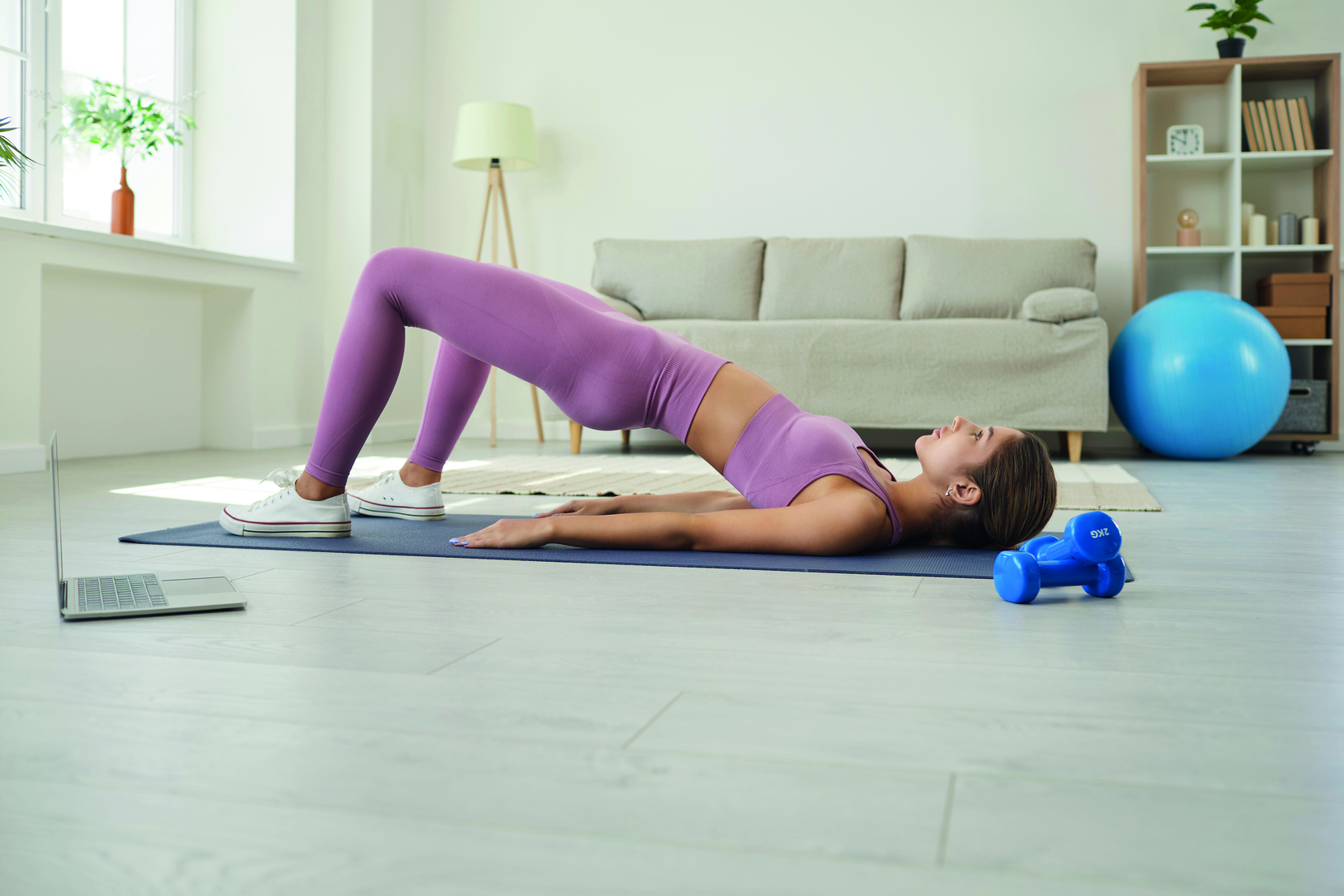
A lack of awareness around the importance of pelvic floor training means that 53 per cent of women who experience symptoms are not seeking professional help.
Could pelvic floor training help with urinary incontinence?
Urinary incontinence (UI) is an oft-discussed symptom, and it’s no wonder. Research conducted by the makers of the smart Elvie Trainer pelvic floor device (£169) reveals that 84 per cent of women in the UK are suffering from leaks. Furthermore, a lack of awareness around the importance of pelvic floor training means that 53 per cent of women who experience symptoms are not seeking professional help, while 39 per cent of those surveyed thought their symptoms were normal.
‘Although we’ve come a very long way in recent years, talking about the pelvic floor is very much still seen as a taboo subject,’ says Harm-Ernandes. ‘As a result, women often feel too embarrassed to talk about their symptoms, and only visit a pelvic physical therapist such as me when they’re desperate for help, which is sad, given there is so much that women can do to strengthen their pelvic floor before symptoms occur.’
Berlin agrees, adding, ‘You should never wait for symptoms of a weak pelvic floor to occur – or wait until pregnancy or after childbirth – to start training your pelvic floor, and this is especially true if you regularly take part in sport and other physical activities. Studies show that athletes, particularly athletes who place a lot of high impact on their pelvic floor, can experience the most severe incontinence – and not just later in life.’
Berlin points to several studies to illustrate her point, including one published in the Scandinavian Journal of Medicine & Science in Sports that found 80 per cent of female elite trampolinists aged between 12 and 22 years of age (who had never had children) reported involuntary urinary leakage, while a 2021 study examining the prevalence of UI among elite athletes of both sexes, published in the Journal of Science and Medicine in Sport, found that 45.1 per cent of female athletes experienced UI in comparison to 14.7 per cent of male athletes.
Perhaps most interestingly, a meta-analysis by the International Urogynaecology Journal, comparing female athletes to non-athletes, showed a 36 per cent prevalence of UI in female athletes across different sports. When compared with sedentary women, the athletes had a 177 per cent higher risk of presenting with UI, thus dispelling the myth that fitter women naturally have stronger pelvic floors.
Does cycling damage your pelvic floor?
Contrary to popular belief, it’s not just high-impact sports that can cause damage to your pelvic floor. More recently, the effects of cycling and Spinning have been up for discussion, following a study by the National Centre for Biotechnology Information that found, when handlebars are positioned lower than the saddle, it can result in increased pressure on the perineum (the area between the anus and the vulva), plus decreased vaginal and labial sensation in female cyclists.
‘Women who ride with a low handlebar can also experience greater pelvic tilt, causing their pelvic floor muscles to tighten,’ says Stephanie Taylor, an Intimate Health Expert at pelvic toner brand Kegel8. ‘If the pelvic floor muscles become too tight, your nerves and arteries can become compressed, causing the muscles that surround them to contract and not relax properly.
‘An overactive pelvic floor can lead to pelvic pain and increase the frequency of urinary tract infections (UTIs),’ she adds, ‘but if your pelvic floor is already weak, you may experience urge incontinence when you cycle. Cycling for extended periods can also push down on the pudendal nerve, which is located in the perineum, and damage to this nerve can result in numbness, increased sensitivity to pain and urge incontinence.’
Sounds bad, but there are some simple steps you can take to avoid theses issues, so you can continue to enjoy cycling and Spinning, says Taylor. These include getting up out of the saddle every 10 to 15 minutes, as recommended by British Cycling, to ease pressure and restore blood flow; ensuring your handlebars are set higher than your saddle; and changing your seat to one with a cut-out in the middle to ease pressure further. And, of course, you can start doing regular pelvic floor exercises.

When your bike’s handlebars are positioned lower than the saddle, it can result in increased pressure on the perineum, plus decreased vaginal and labial sensation in female cyclists.
Is it worth seeing a pelvic floor PT?
‘In a perfect world, all women should be properly assessed by a pelvic health physical therapist to gauge what issues (if any) they are experiencing and find out whether pelvic floor exercises are the right thing to do. If suitable, you should then receive a prescribed programme – which may be very minor to start with – and be taught how to perform pelvic floor exercises correctly, because if you’re doing them incorrectly, it can make symptoms worse,’ says Harm-Ernandes.
‘Rather than just a contraction, you should be doing a pelvic floor contraction followed by a full relaxation,’ she explains. ‘Don’t think of the movement as a “squeeze” and don’t push down. Instead, imagine you have a straw in your vaginal canal and you have to use a drawing “up and in” sensation to pull fluid up through the straw. Then, completely relax, so that every contraction has a full relaxation afterwards. If your pelvic floor is healthy, you should be able to perform this without experiencing discomfort. If you do feel pain or an increase of symptoms, that’s a sign you should see a pelvic floor PT.’
Why is the relaxation part of the movement so crucial? ‘The problem with the pelvic floor muscle is that you can’t see it, so it can be very tense and tight, yet you might have no idea. To help women understand better, I use the biceps analogy,’ says Harm-Ernandes. ‘If you held your biceps in a flexed position for 24 hours, you’d struggle to extend your arm back out again, the muscle wouldn’t function as it should, and you would lose strength in a larger range. It’s the same with someone whose pelvic floor musculature is too tight because they can also experience weakness. Without fully relaxing the pelvic floor, you can end up making it tighter, and that can cause even more pain.’
When you’ve got the hang of contracting and relaxing your pelvic floor, you’ll then need to learn how to fully integrate it into all of your daily movements, says Berlin, whose audio-guided programme features sessions on performing the exercise while lying, sitting, walking, doing the cat-cow yoga pose and, most importantly, breathing, before taking the technique into your wider workouts.
‘Once you learn how to take steps and walk with your pelvic floor, you will be able to train it to release and activate when you are active, and integrate the pelvic floor into your movements and workouts without tensing. This is important because even doing exercises like crunches or lifting heavy weights, can press down on your internal organs and the pelvic floor if you don’t have a good connection,’ adds Berlin. ‘Once you have that mind-body connection, however, you’ll then be able to take it everywhere with you, in everything you do, so you can live life to the full, now and in the future.’
Learn more about how to relax your pelvic floor muscles

Running & pelvic floor training: ‘I would wet myself to get a PB’
Lucja Leonard is an ultra marathon runner who has been suffering from urge incontinence for 10 years. Here, she shares her struggles.
‘I never experienced issues with my pelvic floor until I started running. I know that other women in the running community suffer from the same issue, but nobody talks about it. Sometimes there’s just no holding it in. I start my race, and within an hour, I already have to stop to pee in a bush. It’s frustrating and affects me mentally when I see other runners pass by. To hit a PB during my last road marathon in Manchester, I knew I would have to wet myself at the end of the race. In a city marathon like the London Marathon, you would lose crucial seconds if you decide to stop.
‘It’s well known that if you’re aiming for a personal best, women will just have to wet themselves. This issue is a barrier for women who want to get into ultra running. Loads of races don’t have toilets, and if someone is not comfortable peeing on the trail, they will be discouraged very quickly. I also feel that there is judgement towards women who haven’t had kids but still have problems with their pelvic floor. I’m often told, “You haven’t had babies so why would you have this problem?”. Alongside pelvic training device brand Elvie, I want to raise awareness that, while incontinence is common, it doesn’t have to be normal, and there is help and support out there.’
Best pelvic floor trainers
Pelvic floor trainers can help you to target weak pelvic floor muscles with precise and accurate contractions…
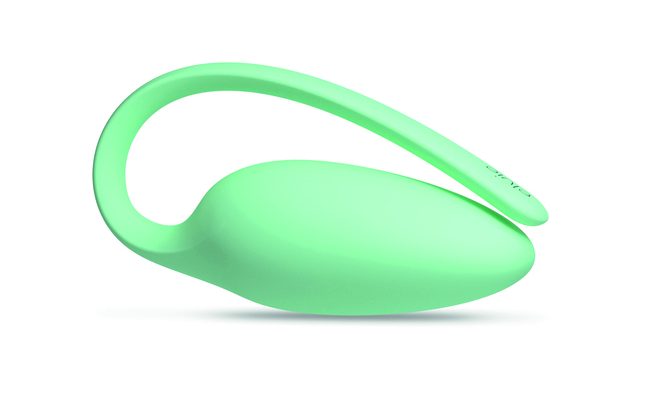
Elvie Trainer
BUY IT NOW:
£169, elvie.com
The Elvie Trainer syncs with an app which uses biofeedback and expert-designed workouts to track correct contractions that will strengthen your intimate muscles.
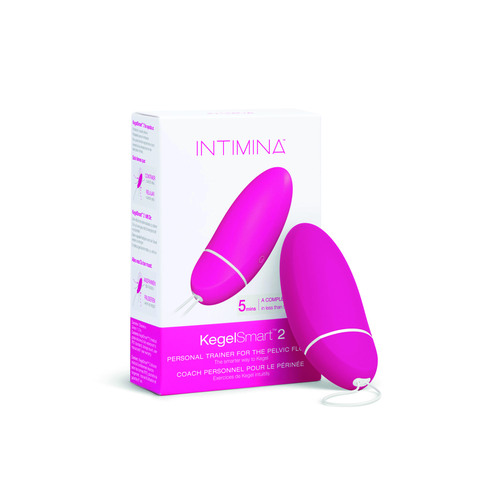
INTIMINA KegelSmart 2
BUY IT NOW:
£89, intimina.com
The INTIMINA KegelSmart 2 is a rechargeable device that guides users through a pelvic floor routine with gentle vibrations. Contract when it vibrates; relax when it stops. Simple.
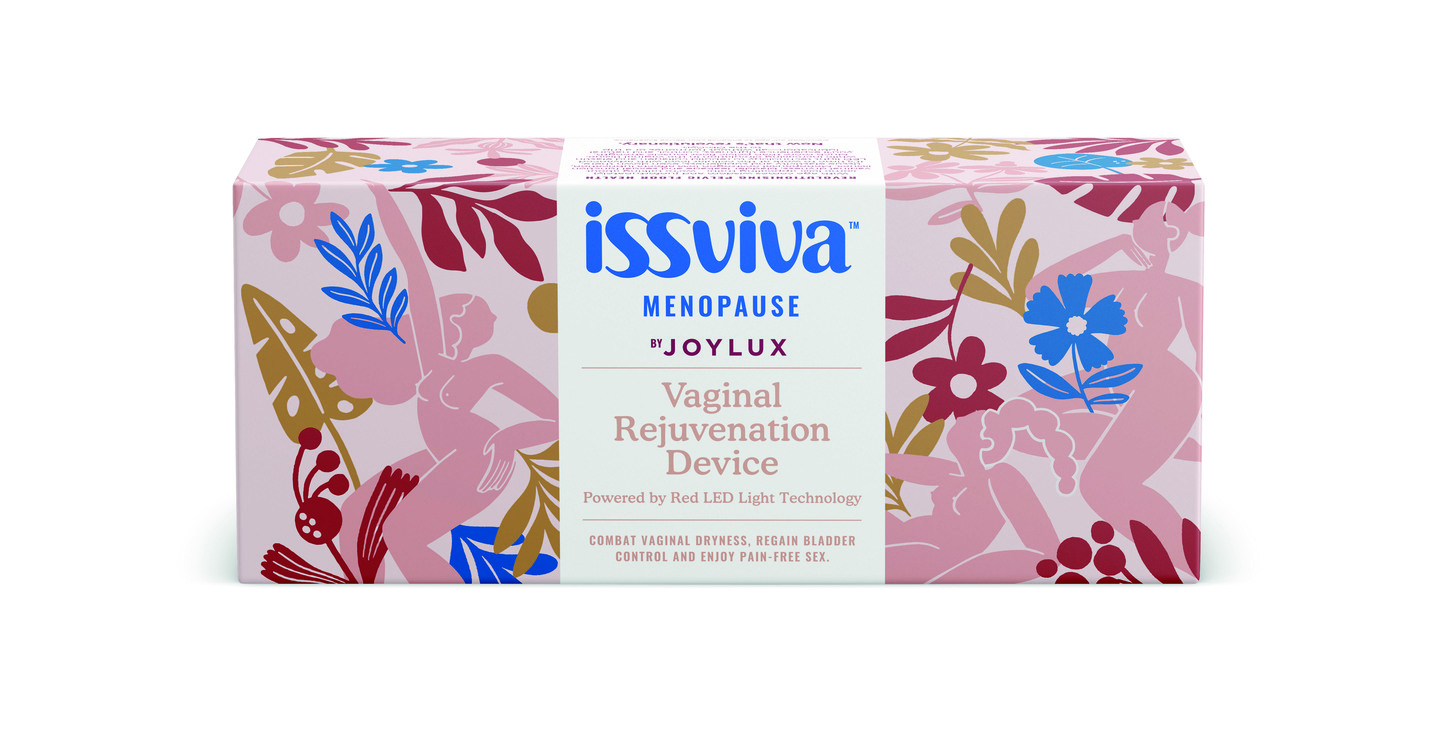
Issviva x Joylux Vaginal Rejuvenation Device
BUY IT NOW:
£299, shop.issviva.co.uk
Tackle incontinence and vaginal laxity with the Issviva x Joylux Vaginal Rejuvenation Device which uses light, vibration and heat to improve tissue density and collagen production.
Words: Joanna Ebsworth | Photography: Shutterstock

